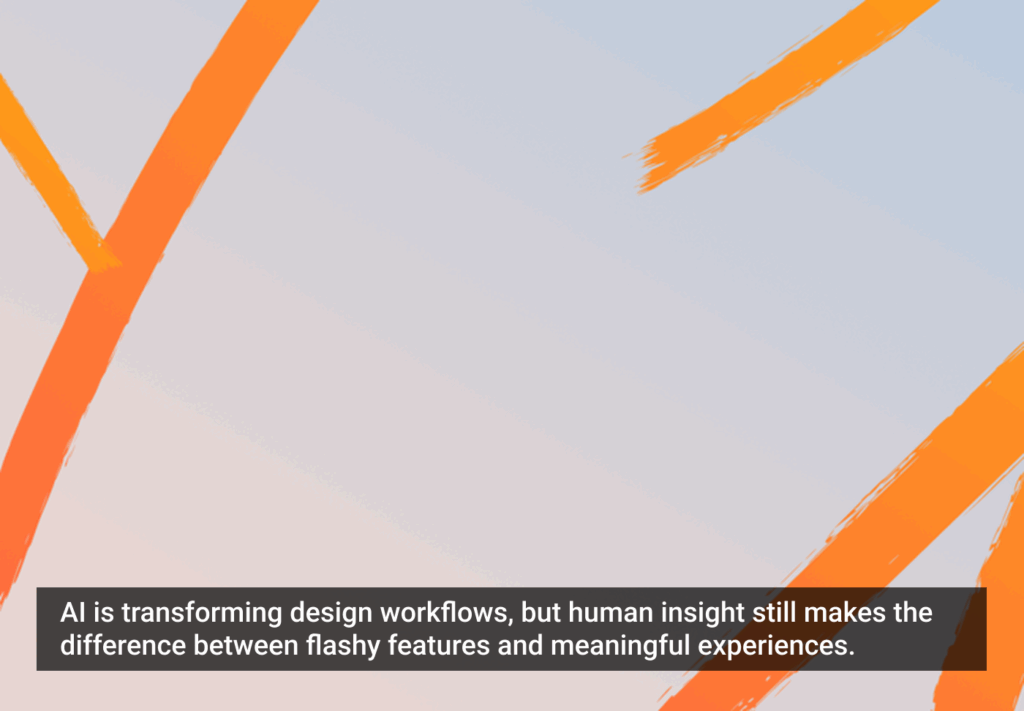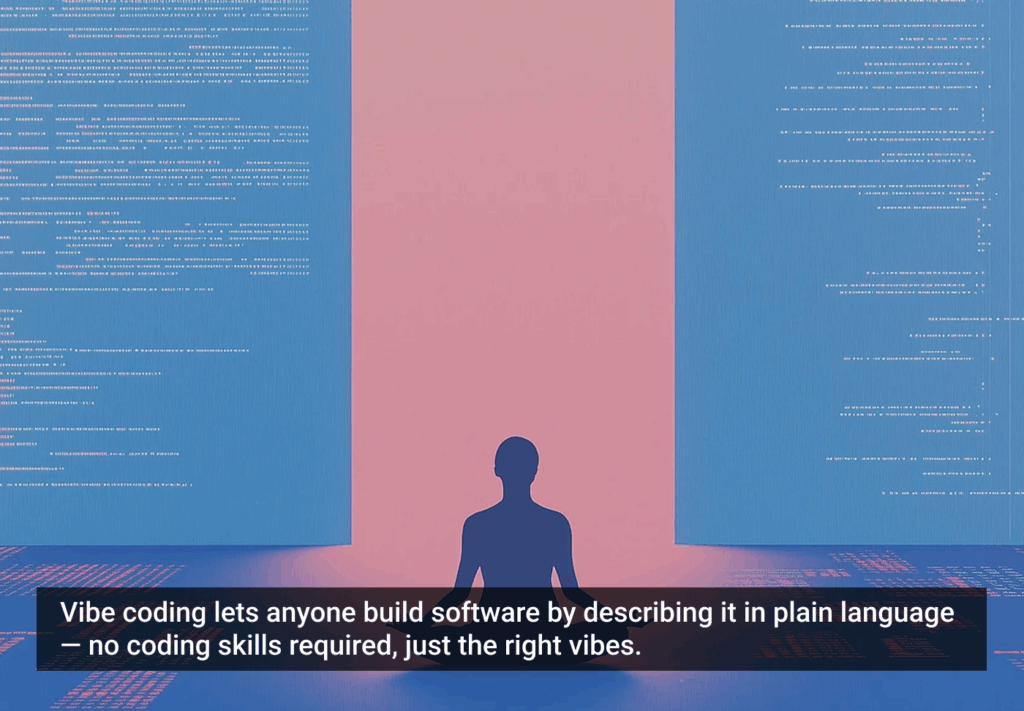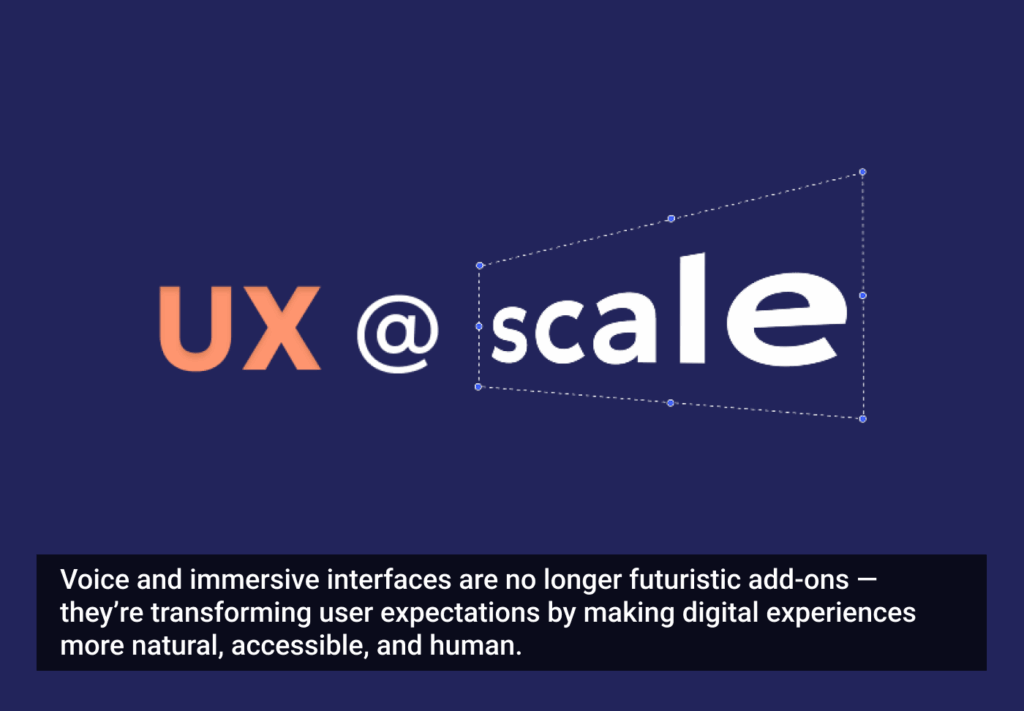On September 18, my company, Involution Studios, published “Redesign Democracy,” a thought piece about taking a fresh look at democracy. Dissatisfied with the current democratic process in the United States, I researched our current situation as well as other past forms of governance, identified the key issues and opportunities we have at the moment, and proposed fairly radical changes. In short, I propose a massive redesign of the legislative branch of the federal government, to include the actual voting on bills being done directly by citizens on their smartphones or purpose-built handheld voting devices. Sharing this project with some of my friends at Rosenfeld Media led to some interesting insights.
What do design thinking, or UX tools and processes, offer in terms of taking a vision for big potential change like Redesign Democracy and turn it into something real?
Jess McMullin:There is a real gap between policy and implementation at all levels of government. That’s true for radical changes in governance, and even for everyday things like improving the Department of Motor Vehicles. The people who deliver a service, and the people who make the policy or legislation that create that service are rarely the same. This division causes much of the pain of bureaucratic process.
Design can serve as a bridge between policy makers and frontline staff. It can inform and facilitate policy design (whether through future concepts like “Redesigning Democracy” or in bringing the reality of frontline services in to policy decisions through field research and codesign). Besides influencing broad decisions, design can also communicate the intent of those decisions through things like journey maps, infographics, and prototypes. That improves frontline program implementation that lines up with the policy intent.
Christian Crumlish:I think there are some positive models out there, some more directly related to design and usability, such as the Field Guides to Ensuring Voter Intent project by the Center for Civic Design, which started as a crowdfunded Kickstarter and has been funded for a few years by the MacArthur Foundation, and the experiments Code for America is doing with developing open-source people-centered solutions for civic challenges, from governance to services. (Disclosure: I am a product and UX mentor for CfA’s accelerator program.)
Whitney Quesenbery: One of the most important things that bringing design into civic projects can do is let everyday people back into the picture. I don’t think that anyone sits down and says, “Let’s make this an awful experience,” but when you don’t pay attention to user experience the results are the same whether you are talking about government or enterprise software.
Marc Rettig: I am uncomfortable with the jargon term “UX” in this question. As the design community (which includes among its many neighborhoods people who say they work on “user experience”) turns its attention to social and governmental challenges, it will help things along if we stand on the most common ground and speak in plain language. For me, that common ground is The Design Process: iteration with intention. The cycle of immerse-and-observe, reflect, and make—performed together with the people who will live with the results—and managed through fearless conversation.
This is tremendously powerful, because so many of the people who are trying to manage institutional and community shifts have just one tool in their hand: planning and decision-making. The last few decades have taught us that we need something else in our management tool kit; something that will help us create in uncertainty. And design is such a tool.
If someone has a vision (like that described in the “Redesign Democracy” document, for example) and is wondering how to bring it into reality, they are standing on the edge of a dark forest. They know they want to get to the other side, but they can’t see the path! Design says, “Here’s a flashlight. Shine it in front of your feet, so you don’t fall in a hole or step on a snake with your next step. Taking that next step will move the light, so you can learn enough to take the next step, and the next step. Hold on to your intention to get to the other side, and this should equip you for the journey.”
There are scores of stories out there, coming from people who are using this sort of iterative approach in both top-down and bottom-up contexts. People are prototyping draft policies before they are enacted, for example. Making trial web sites that sit on the boundary between a community and its police. Reconfiguring a single block of one street just for a weekend, to see how it affects business and traffic. And so on and on. The power is in the iterative, experimental creative process. The specific applications will be myriad and transforming as this continues to catch on in sectors other than business.
Inclusion is an important part of democratic government, enabling every citizen to exercise their constitutional role to vote. What can UX do to help everyone truly participate?
Christian: One of the chief strengths of UX is the discipline of thinking through experiences from the individual’s point of view. By their very nature the experiences “designed” by governments and political institutions are oriented toward (at best) society-wide goals or (at worst) venal self-dealing priorities. In either case, the small voice of the individual is frequently ignored. UX strategy and design requires understanding the world and perspective and needs and desires of the individual and then crafting systems that honor, respect, and—insofar as it is possible—meet those needs.
Jess: California’s state ballot propositions are one of the most open and inclusive examples of direct democracy in the world. With a petition of 8% of the voting public, anyone can add a proposed amendment to the state constitution to an election ballot, where citizens can vote to accept or reject that amendment at the same time they are voting for political candidates. The result is the most complex and lengthy constitution in the world, crowdsourced from various special interests over generations. Getting clear, crisp legislative action in California is often a struggle because of constitutional complexity.
That’s one of the challenges I see to the ‘Redesigning Democracy’ concept—that it may accelerate the complexity of governance because people vote for short-term issues or can’t invest the time to get informed on all the issues when they are confronted with many decisions to make. My hope for design for inclusion is to design for managing only a small number of key choices with amazing dedicated learning resources on those issues so everyone can be a well-informed contributor.
Marc: “Design for User Experience” as a set of ideas and practices was born in the world of fast-paced technology businesses. Its heritage is a stance that more or less says, “We are experts who know a lot about understanding some slice of life, then coming up with ways to make it better; let us do that for you (on behalf of our business sponsors).” It has been rare for those sponsors to hold true inclusion as a driving value of the work. So I think UX people, however well intentioned, have a lot to learn about inclusion.
In particular, real inclusiveness is going to mean letting go of holding full control over the eventual outcome. It’s going to mean convening diversity of both people and power throughout the creative effort, and allowing the form—the new system dynamic, which might include new technology—to emerge through an inclusive and diverse creative process. That takes time. It’s not at all comfortable. Our legacy is to go fast and get quickly to a “solution.” We have things to learn.
We know a lot about making things, but we really don’t have a practice of shifting social systems
But I don’t mean to sound negative, because this is certainly a community of people who have demonstrated their eagerness to learn, and a heartfelt desire for their work to contribute to outcomes that truly matter to the world. The challenge you’ve raised with Redesign Democracy sits on a frontier of design practice. It’s natural that we will have things to learn. Those who move into that frontier are soon going to see their work in a different way, and see the world in a different way. Inclusiveness will change both the work and the worker.
The local level enables innovation in politics to happen more quickly, thanks to the smaller scale and bureaucracy. What are some interesting innovations happening in local governments in the United States and overseas?
Jess: Well, there’s a new recognition of design and innovation in the public sector, with places like the City of San Francisco’s Office of Civic Innovation, Boston’s Office of New Urban Mechanics, and the DESIS Lab at Parson’s that has collaborated with New York City. There’s a growing conversation about social and public innovation that recognizes the importance of design thinking.
As Christian mentioned, Code for America is also doing great things in bringing design and open data together at the local level—their model of matching teams of Fellows with cities for a year-long design-and-build project has resulted in some really great products and services.
I’m a fan of the City of Edmonton’s use of LEGO to explain complex concepts (and I feel pretty lucky to live somewhere that LEGO is used in government). Inspired in large part by our now-Mayor’s enthusiam for LEGO as a communication tool, readers might like to see a past LEGO campaign video, the crowdsourced The Way We Move Challenge, or the LEGO explanations of new bicycle bylaws.
And I’m particularly excited about the new MBA in Civic Innovation from California College of the Arts. This offshoot of CCA’s Design MBA program (chaired by our own RM author Nathan Shedroff) is the first graduate program focused on civic innovation and is coming in Fall 2015.
Whitney: I think we could list any number of interesting local programs. There are so many great success stories. But it doesn’t all have to happen in innovation projects. I’ve met so many people who work in local governments and are starting to make changes on their own. First programs can be accelerators, but the real goal has to be to embed better ways of designing into every aspect of government service. It’s exciting to see a department try something new, have some success, and then embrace change.
Marc: I have not been tracking this closely, but my impression is that some of the newest crop of city mayors are trying a lot of progressive ways to work, incorporating some of the very ideas we are discussing here. Here in my home of Pittsburgh, Mayor Peduto has appointed a Chief Performance Officer (who comes from Arup, not from government) and a data analytics manager. In just a few months the Mayor done things like announcing an open data platform (which could be a component of a democracy platform like “Redesign Democracy”), and initiating an inclusive, open community process as a way to hire a new Chief of Police.
I tell that story to say that it’s not just specific projects we can tell stories about. We are seeing signs of an increasingly receptive and fertile context in local government, open to new approaches, new ways of working, and experimenting with something other than “the way we’ve always done things around here.”
There are a number of design firms who are working on this sort of thing, we should probably mention. And they are often working directly with government agencies. ThinkPlace in Australia is one standout example. The founders came out of the Australian Tax Commission, by the way, and started the firm after a multi-year project with Carnegie Mellon based on this proposition: “The tax code and its public interface are a design problem.”
As a design thinker, what other large scale problems—in governance or other areas— are you thinking about these days, and how could UX be a catalyst for positive impact?
Christian: One area I’ve had my eye on for some time, without any real concrete breakthroughs yet, is how we might better leverage this worldwide discussion infrastructure we have emerging to drive constructive, collaborative, solution-oriented discussions and avoid the active or passive incentives that tend to lead to zero-sum polarized debates. Every time a new platform or project emerges to tackle this I try to follow along but so far I haven’t seen anyone crack this nut and I don’t have a magic solution of my own in my back pocket (yet) either.
Whitney: We might start by thinking about how we manage diversity of thought, culture, and languages. I worry about the they way the web makes it easy to find people who agree with you, and hard to find real debate about issues. I worry about how many apps and other products are not inclusive or even basically accessible. What happens when we try to move civic debate and actions to a platform that doesn’t support people’s preferences for languages, devices, or interaction styles?
One of the more interesting projects working on the infrastructure is Raising the Floor (also known as Cloud for All). It’s a loose collection of people working on how we can make our public infrastructure truly universal.
Earlier, Jess mentioned the disconnect between policy and service delivery. I think that UX tools and processes can help us remake those connections, making them more direct and more human.
We’re really glad that so many local election offices love the Field Guides. But what I love the most is when I see people in those offices use the guidelines to make things even a little bit better, on their own. It says that if we give people good tools, and a clear goal, we’ll start to see change building on change.
Jess: I’ve been working for the last few years on integrating design into policy making, and those efforts are now showing some results on several fronts. Policy matters because it’s how large institutions make commitments and guide decisions and investment. If you want to tackle large scale problems, it’s almost certain that you’ll need to address those issues at a policy level along with whatever other ideas you have.
The great thing is that policy design has parallels to human-centred design practice, so you’re not starting from zero. Policy is another medium for design, and designers can adapt and learn the things that set it apart and make it similar to their existing design practices for service, digital, or physical devices. Using design to inform, facilitate, and integrate policy making and service delivery supports better decisions and better implementation. That makes for a better citizen experience, and better government. But there’s still a long ways to go in understanding how design can help public innovation, and I’m always learning more.
Marc: For the last five years, my colleague and I have been synthesizing approaches, methods, and points of view from many different fields and practices. We’ve looked for people who are starting with a social question rather than a business or technology question, who are facing the true difficulty of social complexity, and who are reaching for systemic shifts rather than single solutions. Meanwhile the term “design for social innovation” seems to have gotten popular, and we find ourselves right in the middle of that little bundle of people and stories.
We’re teaching a “Fundamentals” course in the MFA in Design for Social Innovation program at SVA in New York. And we are teaching a course called “Creating in Social Complexity” in the Carnegie Mellon University Graduate School of Design.
Which is to say, it’s not so much that I’m working on a particular large-scale, “wicked” problem. The question I’m working with (which I expect will occupy me the rest of my life), is this: What is the practice of creating in social complexity, and how can we advance it? We have a good history of building a practice of creating in technical or business complexity. We know a lot about how to make things, and how to run organizations that deliver and service things. But we really don’t have a practice of shifting social systems of any scale, from families or schools, to organizations and local systems, up to nations and global systems. I believe there can be one, and along with lots of others (most of whom do not seem to come out of a design or UX background), I’m working on it as best I can.
The nut of the work is this: since social systems are diverse, connected, and dynamically complex, we need approaches that are inclusive, systemic, and emergent. Some of those approaches are appearing on the shelf. Let’s learn to use them, work them hard, make them better, and learn to develop the kinds of people and organizations who can apply them.
Whitney: One last thought. Democracy is a “wicked problem”—one that is difficult to solve because the requirements are incomplete, contradictory, and changing. When we talk about UX as a catalyst for innovation and change, let’s not get caught in the trap of thinking that we have the solution or even that there is one static solution.
The digital access divide is also real. Even as more and more people rely on mobile devices, there are differences. Most people don’t have smartphones. They have feature phones or just plain phones. Code for America, and the Voting Information Project have both found that the best way to serve some audiences is with simple text messaging apps for simple information like court date reminders, polling place locations, or other interactions with government.
Despite my comments, I am all for digital tools and civic design. Making information about government programs and services available in easy to understand, easily accessed, and accessible formats is a huge step in the right direction. Kudos to the UK Government Digital Service and the new similar programs in the U.S., 18F and USDS. Their insistence that government data and forms can be delivered in a good experience is an inspiration for us all.
We need to be sure that we don’t just increase the gap that leaves so many people out of civic life. How can we use our design superpowers for everyone?
Marc: As my parting shot, I’d like to say something positive and something cautionary about the “Redesign Democracy” document. The positive thing is that it’s wonderful to see a vision for what it could be like, for where we could go and how we could live and govern. The conversation, both national and local, is terrifically out of balance, with near-total focus on what’s broken and how we should fix it, and so little focus on stories of attractive, desirable possibilities we might agree to work toward.
So this is a wonderful precedent. We need a hundred more.
My cautionary comment is to say I’m not sure this document represents the approach we’re going to need if we’re really going to shift our system from its current state to a newer, more desirable state. My concerns:
- It suggests a single “solution” in the shape of a technical platform
- It suggests something that seems top-down, presumably conceived and implemented by a team of “experts”
Maybe this could work, but such efforts don’t really have a very good track record.
If we are going to have a collection of visions—stories about what life and governance could be like—it would be healthy to have at least as many examples of “process fiction” and “process experiments” as we have “solution fiction” and experiments like the “Redesign Democracy” document.
For example, what if there was sponsorship for a hundred local communities in the country to try experiments in democratic policy-making or voting? What if they had help in running those as well-designed, inclusive, evidence-based, safe-to-fail experiments aimed at learning rather than “solving”? And what if those hundred experiments were connected to one another, and managed as a portfolio? What if the most promising of those experiments—those that delivered evidence that they might be real improvements and have potential to scale—were further funded for more iterations? And out of those hundred local laboratories, what if six or ten or twenty ideas worth piloting at a state or national scale emerged?
There is a work of process fiction. For me, such “imagine if” stories are something that Design can offer in a different way than most. Thanks for getting this started, Dirk. I look forward to seeing what happens next!
Image of hand with ballot courtesy Shutterstock.







